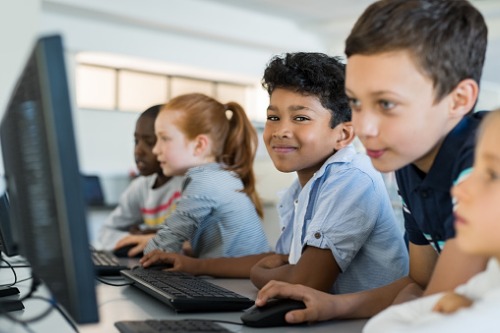
Australian schools have seen a significant adoption of digital transformation (DX) technology over the last decade, with students now interacting with learning and curriculum through multiple channels, both inside and outside the classroom.
Studies have shown that for many professionals, both inside and outside the education space, adapting to digital transformation can be a challenge.
This is because people often get used to doing things in a set way and are reluctant to step outside their comfort zone, resulting in stunted growth. One way to break these habits, says one expert, is for educators to recognise and leverage the benefits of digital transformation.
“DX is enhancing student learning by helping students navigate learning concepts, activities and projects traditionally, physically, and digitally,” Adam O’Neill, managing director of Y Soft Australia, told The Educator.
“Students with access to modern and digital learning tools can also access information remotely and communicate with classmates virtually when working on group projects, ensuring collaboration and learning isn’t interrupted by location barriers.”
The fact that every student learns differently, O’Neill explained, means it is important that technology in education supports the visual, physical and hands-on needs many students require to wrap their heads around new ideas.
“This is also a major asset to teachers who can use technology tools to better connect with students’ unique learning needs,” he said.
‘A powerful vehicle for learning’
O’Neill said traditional teaching tends to separate digital games, particularly video games, from the learning process, and often identifies games as distractions in the way of quality learning.
However, when digital games are paired with core education concepts, he says, they can be “a powerful vehicle for learning” in the classroom.
“Some education providers are merging educational content with digital gaming platforms, to drive student interest and engagement,” O’Neill said.
“These platforms, such as Classcraft, Nintendo Labo, Rezzly and Class Dojo, can also test students, and help them develop finer skills in problem-solving and cooperation.”
O’Neill said school administrators and teaching staff should consider the benefits gamification can bring to their students and classrooms when it comes to improving motivation and fostering more positive attitudes towards learning.
“Technology in schools and classrooms is helping students better problem-solve in theoretical, virtual, and physical ways,” he explained.
“For example, using 3D printing technology lets students create physical models and structures, helping them solve structural and conceptual problems in a hands-on way, which is highly beneficial across a range of subject including science, technology, engineering and mathematics (STEM), as well as visual arts, design, history, food technology, and more.”
O’Neill said there are also learning apps and educational online games that enhance students’ problem-solving skills.
“These can be downloaded onto smartphones and personal devices, providing students with more learning mobility, and new opportunities to solve fun and interesting problems with their peers,” he said.
“Other features in the classroom, like augmented reality technology, let students visually and audibly immerse themselves in learning content, with highly beneficial effects.”
O’Neill explained some of the ways that school leaders can enhance students’ learning experiences through the use of 3D printing and augmented reality.
“3D printing technology not only lets students create physical structures for problem solving purposes, but it also lets teachers explore creative and productive lessons that captivate and engage students,” he said.
“Using 3D printing, students can physically interact with content that fuels cognitive learning and helps them effectively retain information. Augmented reality tools help foster a mix of virtual and physical reality in the classroom.”
O’Neill said students can experience a higher quality of learning by bringing subjects or locations to life, such as the Great Barrier Reef, or the Colosseum.
“This helps students connect with geographic and historical settings in a hyper-realistic way, offering highly immersive experiences that don’t require schools to devote large costs and commitment to day trips or travelling,” he said.


